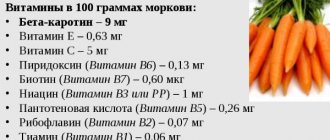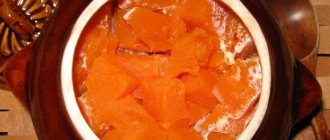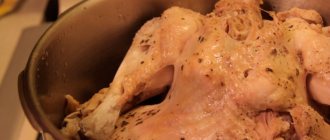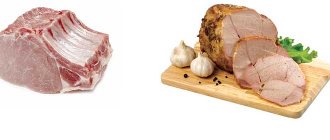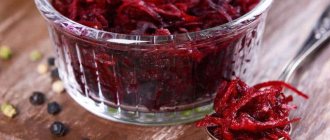What is corn
Despite the fact that the cultivation of corn began 7 thousand years ago by the inhabitants of Latin America (Mayans, Aztecs, Incas), it came to Europe only in the 16th century and even later to Asia and Africa. At the turn of the 17th-18th centuries, the inhabitants of Hungary and Romania learned about corn, who immediately dubbed this plant “yellow flasks”.
Content:
- What is corn
- The nutritional value
- Effect on the body
- Top useful properties
- Some Caveats
- How to choose the right one
- Areas of use
- Corn in folk medicine
- Corn in cooking
Corn is a herbaceous, erect annual plant that grows up to 2-4 m. There is an assumption that it is the oldest cereal plant on the planet [1]. Modern corn differs significantly from its wild ancestor in both color and higher yield. Interestingly, it is impossible to find wild corn in nature today. Instead, biologists know many varieties of modern crops, and not all of them have the usual yellow color. Today, breeders know white, red and even blue corn. Depending on the purpose, nine main groups of this culture are distinguished: siliceous, sugar, tooth-like, starchy, waxy and others [1]. The ideal conditions for growing corn are subtropical climates, although they also grow well in temperate latitudes.
Calorie content and daily value
Boiled corn has great energy value. A few cobs can be considered a complete meal. Given the high carbohydrate content, corn satiates you for 3-4 hours. Calorie content of boiled corn on the cob (without salt) is 128 kcal.
The daily norm of the product is 2-3 ears for an adult and 1 ear for a child over 6 years old.
Glycemic index of cooked corn
Corn itself is a very sweet product. Moreover, every year more and more new varieties are developed, in which the sugar content is constantly growing. All high-carbohydrate foods, including corn, also have a high glycemic index. On average, this figure for boiled corn is 82 units. But the sweeter the variety, the higher this indicator. Numbers for comparison: glycemic index of apple – 35, watermelon – 70, cucumber – 25.
We recommend reading: Cloves - beneficial properties and contraindications, why chew them
What you need to know about the glycemic index? These are indicators of the speed with which the product is absorbed by our body and increases blood sugar levels. The GI scale ranges from 0 to 100. The higher the score, the stronger the glucose spikes. Foods with a high glycemic index are contraindicated for diabetics. But in general, GI is a useful indicator for people who follow a healthy diet.
The nutritional value
Corn is an extremely rich source of nutrients. These golden grains supply the body with vitamin C, folic acid, and niacin. In addition, they contain vitamins A, , E, . The kernels of this cereal consist of 72% carbohydrates, 14% protein, and another 14% of the composition is fat [2]. Corn also contains magnesium, calcium, selenium, zinc, potassium, iron, phosphorus, copper, and iodine. And by the yellow color of the vegetable, you can determine that it is rich in carotenoids, such as zeaxanthin and lutein.
The table below shows the nutrient content per 100 g of raw product [2].
| Calorie content | 86 kcal |
| Squirrels | 3.27 g |
| Carbohydrates | 16.767 g |
| Fats | 1.35 g |
| Cellulose | 2 g |
| Ash | 0.62 g |
| Water | 76 g |
| Vitamin A | 9 mcg |
| Thiamine (B1) | 0.16 mg |
| Riboflavin (B2) | 0.06 mg |
| Pantothenic acid (B5) | 0.7 mg |
| Pyridoxine (B6) | 0.09 mg |
| Folic acid (B9) | 42 mcg |
| Vitamin E | 0.07 mg |
| Vitamin PP | 1.8 mg |
| Choline (B4) | 23 mg |
| Calcium | 2 mg |
| Sodium | 15 mg |
| Magnesium | 37 mg |
| Phosphorus | 89 mg |
| Potassium | 270 mg |
| Sulfur | 33 mg |
| Iron | 0.52 mg |
| Manganese | 0.2 mg |
| Zinc | 0.46 mg |
| Copper | 54 mcg |
| Selenium | 0.6 mcg |
Compound
Corn grain is a real storehouse of important and necessary minerals for humans: calcium salts, potassium, iron, magnesium, phosphorus, vitamins B, E, PP, chlorine compounds, copper, sulfur, selenium, arsenic, gold, etc. – a total of 26 elements from Mendeleev’s periodic table.
Corn protein contains essential amino acids such as lysine and tryptophan, which are not independently synthesized in the body.
What vitamins and minerals does it contain?
Of the fat-soluble vitamins, corn contains A, beta-carotene, alpha-carotene, E and K. Of the water-soluble vitamins, there are vitamins C, B1, B2, B3 (PP), B4, B5, B6 and B9.
Vitamins:
- vitamin PP - 2.1 mg;
- choline - 71 mg;
- beta-carotene - 0.32 mg;
- vitamin A - 53 mcg;
- vitamin B1 - 0.38 mg;
- vitamin B9 - 26 mcg;
- vitamin E - 1.3 mg;
- vitamin H - 21 mcg.
Macronutrients:
- potassium - 340 mg;
- phosphorus - 301 mg;
- sulfur - 114 mg;
- magnesium - 104 mg;
- chlorine - 54 mg;
- calcium - 34 mg;
- sodium - 27 mg.
Health benefits and harms
The beneficial properties of corn are due to the fact that vitamins and nutrients from this plant are quickly absorbed by the body. Corn normalizes the functioning of the gastrointestinal tract, the production of sex hormones, and prevents the aging of the body and the development of cancer cells. It has a beneficial effect on a woman’s reproductive system, relieving pain during menstruation and reducing the symptoms of menopause.
Contrary to popular belief, corn is not modified. This process occurs only with those varieties that are sent for oil processing. Ordinary corn, which we eat, does not harm either our health or our figure.
The plant is used for medicinal purposes in folk medicine and cosmetology. Boiled corn cobs are used for constipation, liver diseases, gout, nephritis, and diseases of the cardiovascular system.
A corn-based mask is an effective remedy for various types of pigmentation on the face (including age-related). It will help even out the skin and get rid of scars and acne marks.
Corn, like any product, can have a negative effect on the body:
- in some people it provokes allergic reactions: if you are individually intolerant to this product or if you are prone to allergies, you will have to exclude it from the menu;
- Exceeding the norms of consumption leads to bloating, flatulence, and bowel dysfunction;
- substances contained in the product increase blood clotting.
Effect on the body
Recently, corn has become especially popular due to the absence of gluten, one of the most powerful allergens.
In addition, this cereal is rich in vitamin E, which affects skin health, and the antioxidants present protect the eyes and reduce the risk of developing macular degeneration. At the same time, lutein contained in corn grains is useful not only for people with poor eyesight, but also for pregnant women. Regular consumption of this vegetable has a beneficial effect on fetal development. Selenium makes corn a powerful anti-tumor product, as well as a natural medicine for those with impaired kidney function. These yellow grains are good for the liver and also help prevent the accumulation of excess cholesterol. The water in which corn was cooked is recommended to be taken as a remedy against urinary incontinence and chronic cystitis.
Cooking features
If cooked correctly, most of the beneficial properties of the cereal remain, which makes the product a useful and reliable assistant for those who appreciate a healthy lifestyle. The group of microelements that is included in the composition helps stimulate metabolic processes, improve the nutrition of body cells, and quickly remove unnecessary elements from the body. Vitamins strengthen bone and muscle tissue, restore the body at the cellular level, accelerate wound healing processes, and control the penetration of beneficial elements through the walls.
Corn is prepared by boiling in a special container. At home, these are ordinary saucepans, and in specialized canteens, these are pots and pans. To avoid losing most of the vitamins and microelements, cooking should not last long (up to 15 minutes). The most gentle cooking option is in the microwave. If you cook old corn in water over low heat, it will take at least 40-45 minutes.
To ensure optimal taste of the product, it should be boiled in milk and cream. Flour, eggs and butter may be added during the process. At the same time, the finished cereal should be eaten immediately - otherwise it will lose some of its healing properties.
If possible, you should steam the corn. This ensures that the maximum amount of healing substances is retained.
Top useful properties
Improves digestion
Just one cup of corn kernels contains almost a fifth of your daily fiber requirement [2]. And this substance is important for the successful prevention of diseases of the digestive system, especially the intestines, as well as their treatment. Regular consumption of fiber protects against hemorrhoids, irritable bowel syndrome, and diverticulosis. This component promotes faster removal of waste products from the body. In addition, it stimulates the secretion of digestive juices, which is also important for proper digestion of food.
Source of vitamins and minerals
Corn is rich in B vitamins, particularly thiamine and niacin. Thiamine is necessary for adequate functioning of the nervous system. Niacin deficiency can lead to pellagra (a disease characterized by diarrhea, dementia, and symptoms common to some dermatological problems). In addition, corn is a rich source of pantothenic acid, which is responsible for the proper metabolism of carbohydrates, fats and proteins. Folic acid deficiency in pregnant women can cause serious harm to the fetus. Corn can provide most of the daily requirement of the substance, as well as vitamin E, a natural antioxidant that not only slows down aging, but also improves resistance to various diseases. Vitamin A contained in corn is important for maintaining healthy eyes and skin, stimulates the activity of the immune system and, as a powerful antioxidant, protects against free radicals.
At the same time, corn contains minerals that are valuable for the body, such as phosphorus, manganese, magnesium, zinc, iron, and copper. This vegetable will easily increase your selenium reserves. Phosphorus, which is part of the chemical composition of these golden grains, is important for the proper development of bones and also contributes to the proper functioning of the kidneys. Magnesium is significant as a mineral that maintains normal heart rhythm and affects bone density.
Anti-cancer agent
Corn is a rich source of antioxidants needed to fight free radicals. The latter, in turn, according to scientists, cause cancer. Unlike other vegetables, corn does not lose its beneficial properties after heat treatment. This may sound paradoxical, but, for example, boiled corn is even healthier and richer in nutrients than raw corn.
In addition, the vegetable contains phenolic compounds, in particular ferulic acid, which, as scientific studies have shown, has antitumor activity and prevents breast and colon cancer [3][4].
Heart Defender
Corn oil prevents atherosclerosis and corrects the level of “bad” cholesterol [5]. The result of such activity is the protection of the cardiovascular system from many diseases. Incorporating corn oil into your diet is the best way to protect your heart and provide your body with healthy omega-3 fatty acids. Moreover, there is reason to consider corn as a vegetable that regulates blood pressure. It reduces the risk of heart attack and stroke.
Natural cure for anemia
Being a source of folic acid (B9), this cereal can prevent anemia. It contains iron, which is necessary for the production of red blood cells. Deficiency of this element is one of the most common causes of anemia.
Helper for diabetics
Corn is beneficial for people with type 2 diabetes because it contains phytosterols, which regulate the production and absorption of insulin and prevent hypo- and hyperglycemia. Taken together, this effect has a very beneficial effect on the general health of patients.
Daily consumption rates
Composition of 100 g of corn according to the daily requirement:
- polyphenols normalize metabolism and strengthen the immune system. Protects against obesity and diabetes, and also strengthens the heart;
- fiber – 9-15% of the norm, cleanses the body, improves intestinal motility and normalizes microflora;
- vitamin B5 – 15%, participates in the biosynthesis of hormones, enzymes and cholesterol, ensures the absorption of sugar in the intestines;
- vitamin B1 – 13%, without it the normal functioning of the nervous system, heart and blood vessels is impossible. Participates in the formation of amino acids and enzymes;
- phosphorus – 11%, strengthens bones and participates in hormonal metabolism.
Standards for children, men, women (including pregnant women)
Boiled, canned corn, steamed or grilled grains can be consumed in the following quantities:
- adults – no more than 150 g per day (two medium ears);
- children – 50-75 g (one cob).
Is it possible to have boiled corn during pregnancy? If a woman is overweight, doctors do not recommend it. This is due to the fact that its calorie content is 123 kcal per 100 g. A woman of normal weight is allowed to consume corn. Microelements and vitamins effectively combat toxicosis in pregnant women when consuming just 1 cob per day and stimulate lactation in nursing mothers.
What is best to combine with
Canned grains are used as additional ingredients in the preparation of soups and salads. Corn goes well with vegetables, herbs, vegetable oil and butter.
Porridge is prepared from coarse corn flour. And fine flour is suitable for pancakes and puddings. Flour added to cookies or cakes gives it a special taste and friability. Corn flakes are made from crushed ripe corn kernels. All children love this product; it can be eaten with yogurt, juices, compote or milk.
Some Caveats
Ripe corn contains a lot of fatty acids. For this reason, it is not advisable for people prone to heart disease to overuse vegetables, or especially corn oil. Recently, fructose obtained from corn, which is used as a raw material for sweeteners, has become popular. Meanwhile, surrogates in the form of corn syrup have a very detrimental effect on health: they cause obesity and sharp jumps in glucose in the bloodstream.
Like most grains, corn grains contain phytic acid, which makes it difficult for the body to absorb minerals such as iron and zinc [6]. This is usually not a problem, especially if you have a balanced menu with regular consumption of meat. But in countries where corn is a daily staple, phytic acid can become a serious problem. Soaking the corn before eating will help slightly reduce the content of this substance in the vegetable.
And one more disappointing fact. Corn is a vegetable that is most often grown from genetically modified seeds. And this is also important to know.
Boiled corn: contraindications and harm
- It should not be used by people with poor blood clotting or thrombosis.
- Excessive consumption of cereals provokes nausea.
Because corn can cause flatulence, doctors advise not giving the product to children under 2 years of age. But ideally, this biologically active product should be introduced for the first time from 5-6 years of age.
Source
More articles from the section “Benefits and harms of products”
Composition of lentils and benefits, what harm it can cause to health
The benefits and harms of baked apples, recipe in the oven
The benefits and harms of turkey meat, how many calories are in meat
What are Omega 3s for, what products do they contain, benefits and harms
How to choose the right one
This vegetable appears on markets in the second half of summer. When choosing corn, it is better to give preference to the cobs, wrapped in green leaves, with shiny and still fresh “hair”. The lighter the grains, the younger, and therefore juicier and tastier the corn. The most delicious vegetable is the one with light yellow grains. It is important that there are no dark spots or mold on the head of cabbage [7].
BZHU corn porridge
The energy and nutritional value of porridge depends on how it is cooked: with milk or water. Below are the indicators of the KBZHU of this dish:
| Type of corn porridge | Number of calories (Kcal) and % of the prescribed norm | Squirrels | Fats | Carbohydrates |
| Grams and % Daily Value | ||||
| On the water | 89, 5 (5, 83 %) | 2, 3 (2, 5 %) | 0, 3 (0, 45 %) | 19, 4 (13, 86 %) |
| With milk (2.5% fat) | 101, 5 (6, 62 %) | 3, 7 (4, 02 %) | 3, 4 (5, 07 %) | 13, 9 (9, 93 %) |
We recommend that you familiarize yourself with the BJU of sesame
It should be noted that the calorie content, as well as the nutritional value of corn porridge cooked in milk or water, will depend on the percentage of fat content of the milk and the presence of other ingredients.
Corn in folk medicine
In folk medicine of different countries, corn occupies a place of honor. But for treatment, it is most often not whole heads of cabbage that are used, but stigmas. They are believed to have diuretic, choleretic and hemostatic properties [8]. In addition, infusions of corn “hair” are used to accelerate blood clotting, dissolve kidney stones, and treat various liver diseases. External use of infusions helps get rid of various skin diseases, rashes, and bruises. Not only traditional healers, but also certified therapists prescribe herbal medicines from corn to their patients to treat cholecystitis, hepatitis, inflammation of the biliary tract, and cystitis.
A universal recipe for stigma infusion
To prepare a medicinal corn infusion, you will need a glass of boiling water, which you need to pour about 10 g of stigmas. Cover and wrap the container with the infusion. Leave for at least an hour. Take the finished medicine 1 tbsp. l. before meals three times a day.
Infusion for the treatment of the liver
This remedy is prepared from corn silk and rose hips, taken in equal proportions. Pour boiling water over two tablespoons of the mixture (you will need about a glass) and, wrapping it up, leave for at least two hours. Take 1/3 cup three times a day after meals. You can improve the taste of the drink by adding a little honey.
Decoction for treating weakened hair
Weak, thin, dull hair can be restored by rinsing it with a decoction of corn silk. To enhance the effect, you can take corn raw material and nettle in equal proportions.
What are the benefits of corn for women?
- Corn oil has a high content of vitamin E and A, so it is quite beneficial for the skin. They lubricate corns, calluses, vitamins have a great effect on the condition of nails and hair.
- With severe PMS, pain and smooth muscle tension decrease. A large amount of minerals and vitamins have a positive effect on the reproductive system.
Note! Of course, with the use of masks made from corn flour, you can get rid of age spots, acne, and smooth out wrinkles.
In what form is it used?
The value of corn for the human body is influenced by the way the cobs are prepared. It can be consumed raw, boiled or canned. Corn kernels can be sprouted. Each of these methods has its own characteristics and affects human health differently.
Raw
Raw grains contain the most vitamins, but not everyone likes the taste of corn without heat treatment. In addition, such a product is more difficult to digest by the gastrointestinal tract and can cause bloating, so for stomach diseases it is better to eat boiled cobs.
Only young cobs should be eaten without heat treatment. If the corn has already passed the stage of milky ripeness, then it is better to cook it.
Boiled corn
Cooking preserves most of the nutrients and vitamins in corn and gives it a pleasant taste. Corn processed in this way is easiest for the body to digest and is the most loved by gourmets. The healthiest way to cook corn on the cob is without salt. This product satisfies hunger well, as it contains slow carbohydrates and promotes weight loss. During the corn season, boiled cobs are included in fasting diets. They should be eaten immediately, while still warm, and not stored for a long time.
To lose weight, boiled corn is best consumed along with other low-calorie vegetables and fruits, but protein foods should be avoided. Consuming boiled cobs along with sour apples can cause bloating.
Canned
Properly canned corn grains retain all the advantages of the boiled product and are stored for a long time. They can be added to salads, omelettes, soups and other dishes. When buying canned corn, you should carefully study the composition: salt, monosodium glutamate, and sugar may be added to it. These additives impair the nutritional value of the product.
Sprouted
After germination, corn accumulates a certain amount of bioactive substances. In such a product, complex fats are converted into fatty acids, and complex carbohydrates into simple sugars. Sprouted grains can be used to make malt or eaten by raw foodists.
Corn kernels can be germinated to produce sprouts. This product increases the amount of vitamins. It also contains chlorophyll. These greens are usually used for making green smoothies, salads, and sprinkled on various dishes. Corn sprouts are grown without the use of chemicals - at home on a windowsill in a few days. They have a pleasant sweetish taste. This is an excellent source of vitamins in the spring, when many people experience vitamin deficiency.
Corn diet for weight loss - can you eat corn while on a diet?
Experts say that during the corn diet you can lose from 3 to 5 kg in just 4-5 days. The basis of the diet is made up of ripened cereal cobs, which effectively break down and burn fats.
The main thing that those who want to lose weight with the help of corn should know is that this diet is contraindicated for people with diseases of the gastrointestinal tract!
Advantages of the corn diet:
- Effective removal of subcutaneous fat.
- Acceleration of metabolism.
- Rejuvenation of the body.
- The high fiber content of corn helps cleanse the intestines of toxins and waste.
- Saturation of the body with useful vitamins and minerals.
There are also disadvantages to the corn diet, but they do not lie in the harmfulness of the product to the body, but in the strict adherence to nutritional rules.
If other diets allow some deviations from the rules, then during the corn diet you cannot violate a single point. Otherwise, such a diet will be ineffective. During the corn diet, you can only eat:
- Corn dishes.
- Vegetables and fruits.
- Dairy products.
The following are completely excluded from the diet:
- Meat, fish and seafood.
- Apples.
- Any baked goods, flour products and sweets.
As you can see, the difficulty of the diet lies in the monotony of food. The lack of proteins also affects, which manifests itself in rapid fatigue and lethargy.
For maximum effect, you need to adhere to some rules when leaving the diet:
- You should not consume canned food, pickles, sweets, smoked, spicy foods, alcohol and carbonated drinks for at least 7-10 days after the diet.
- Every night you need to drink a glass of mineral water.
- It is also important to include protein foods in your diet in small quantities, gradually increasing portion sizes to normal. You cannot eat a lot of proteins on the first day after finishing the diet - this is fraught with problems in the functioning of the intestines (constipation, bloating).
- You can repeat the corn diet no earlier than six months after leaving it.
In addition, corn as a dietary ingredient can be eaten while losing weight if you follow the following diets: sports diet, rainbow diet, blood type diet, Kremlin diet.
Proper storage
There are a variety of ways to store corn. It is frozen, canned, dried. The grains can be separated from the cob and stored in a suitable container.
It is worth noting that fresh corn can be kept on the refrigerator shelf for no more than 21 days. Corn kernels are stored the longest in glass jars that have undergone a preservation process - 3 years. If they are preserved in tins, the shelf life is shorter - 2 years.
Frozen corn can be stored for up to 1 year and retains all the benefits. This preparation helps preserve most vitamins. When choosing this storage method, the product must be prepared:
- The cob must be cleaned of leaves, fibers, spoiled grains and the tip separated, then washed under running water.
- Then select suitable containers with cool water and ice.
- Pour water into a large saucepan and bring to a boil.
- Place each cob in boiling water for a couple of minutes and then place in cold water. Repeat everything 4 times.
- Then dry the corn on a paper towel.
- Then wrap each copy in polyethylene film and place it in the freezer.
This cob remains juicy and tasty. In a similar way, grains are frozen, which after such processing are placed in containers and then in the freezer.
Corn is considered a healthy product that contains many vitamins and minerals necessary for humans. It can be consumed in various forms. Boiled corn cobs are the most delicious and low-calorie. It is best to buy them in season. In winter, you can take canned or frozen product. It should be noted that there are contraindications to the consumption of corn and dishes made from it.
